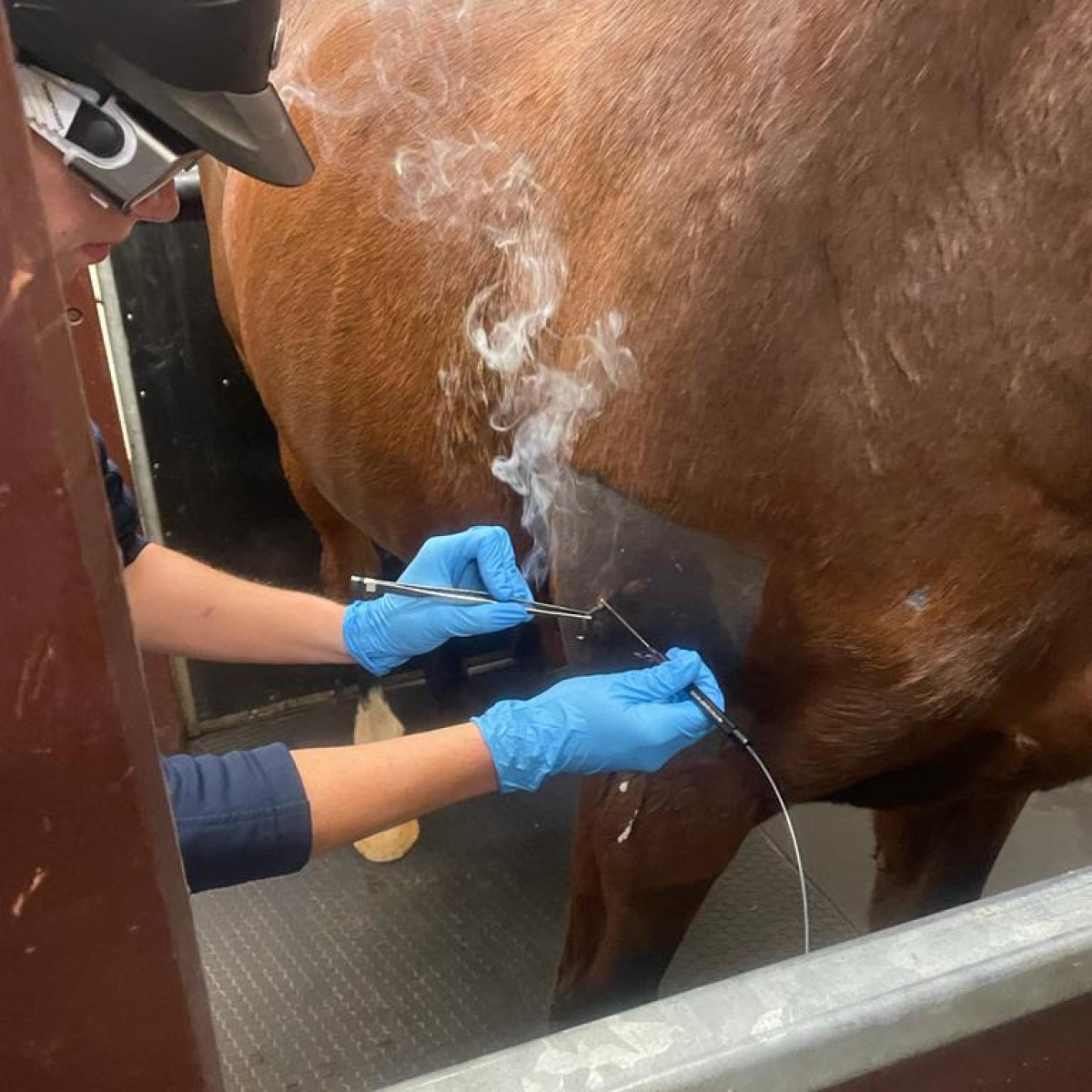How Laser Therapy in Horse Therapy Is Transforming Vet Treatment for Horses
Laser treatment has actually emerged as a transformative approach in equine vet care, supplying a non-invasive remedy that speeds up healing and improves general health. Leveraging precise light wavelengths, this innovative therapy boosts cellular regeneration, decreases inflammation, and mitigates pain. Its effectiveness extends from bone and joint injuries to persistent ailments like osteoarthritis, significantly boosting flexibility and life high quality for equines. The mobility and convenience of laser therapy gadgets additionally underscore their growing necessity amongst veterinarians. As we explore the complex auto mechanics and real-world successes, the profound effect on equine medical methods becomes increasingly evident.
Recognizing Laser Therapy

The innovation behind laser therapy is grounded in the concept of photochemistry, where photons are soaked up by chromophores within cells, leading to boosted ATP manufacturing and inflection of responsive oxygen types (Equine Therapy). This, in turn, promotes cellular spreading, minimizes swelling, and accelerates recovery. Vet professionals use different kinds of lasers, including low-level lasers (LLLT) and high-power Class IV lasers, depending on the particular therapeutic goals and the nature of the equine problem being dealt with
Different laser wavelengths and power setups are meticulously picked to target different cells depths and achieve desired scientific end results. Safety procedures are vital, as incorrect use can cause thermal damages or suboptimal restorative results. Therefore, a comprehensive understanding of laser therapy's devices and applications is crucial for its efficient application in equine vet practice.
Advantages for Horse Wellness
The myriad benefits of laser therapy for equine health and wellness include enhanced recovery, discomfort reduction, and boosted wheelchair. This innovative treatment modality leverages certain wavelengths of light to pass through cells, stimulating cellular feature and advertising rapid tissue repair service. The non-invasive nature of laser treatment makes certain marginal stress and pain for the equine, facilitating a smoother recovery procedure.
Enhanced recovery is one of the leading benefits, as laser treatment accelerates mobile regeneration and collagen synthesis. This brings about faster recovery times from injuries and procedures. Discomfort decrease is attained via the anti-inflammatory impacts of laser therapy, which decreases swelling and lowers the production of pain-inducing chemicals. Because of this, horses experience significant relief from chronic and intense pain problems.
By reducing inflammation and pain, and improving cells repair work, laser therapy aids in recovering joint feature and muscular tissue versatility. Thus, laser treatment stands as a transformative device in contemporary equine veterinary treatment.
Typical Conditions Dealt With
Laser treatment has actually emerged as a flexible treatment alternative for a selection of typical equine problems. Additionally, laser therapy is reliable for conditions like osteo arthritis, where it aids mitigate joint inflammation and promote cells repair work.
Wound management is an additional area where laser treatment has shown significant promise. Persistent injuries or slow-healing abscess can be specifically challenging in steeds, but laser therapy improves mobile regrowth and improves blood circulation, therefore accelerating the healing hop over to these guys procedure. In addition, laser therapies have been effectively utilized in handling unguis conditions such as laminitis and abscesses, easing discomfort and advertising much faster healing.

Modern Technology Behind Laser Treatment
Past the myriad problems treatable with laser treatment, the modern technology itself benefits better exam. At the heart of laser therapy is the use of details wavelengths of light to pass through cells and elicit organic reactions. These wavelengths, commonly ranging from 600 to 1000 nanometers, are selectively absorbed by chromophores in the skin, muscle, and other explanation cells, prompting a waterfall of mobile occasions.
Laser devices used in vet medicine often make use of low-level laser treatment (LLLT) or chilly laser treatment. Unlike high-powered surgical lasers, these tools operate at lower power degrees, enhancing restorative benefits while minimizing thermal damages. The power from the laser light boosts adenosine triphosphate (ATP) production, enhances cellular metabolic rate, and speeds up tissue repair service processes.

Success Stories and Study

Showcasing the tangible benefits of laser treatment, countless success stories and instance researches illuminate its transformative effect on equine wellness. One such situation involves a thoroughbred racehorse suffering from chronic tendonitis. Typical treatments produced minimal improvement, yet after incorporating laser treatment right into the program, the steed showed significant reductions in swelling and pain within weeks, inevitably returning to competitive racing.
An additional engaging example includes a dressage horse identified with severe neck and back pain, limiting its efficiency. A veterinary team used low-level laser therapy (LLLT) to target the irritated areas, resulting in marked improvement in adaptability and a noteworthy decrease in discomfort. Over several sessions, the horse restored its peak form, showcasing the effectiveness of laser treatment in resolving bone and joint issues.
Additionally, a research performed at a leading equine center here checked out 50 steeds with various soft tissue injuries treated with laser treatment. The results stood out: 85% of the horses showed accelerated healing times and boosted mobility. These instances underscore the flexibility and performance of laser therapy in equine medication, using a non-invasive, scientifically-backed approach to improving healing and performance in equines.
Verdict
Laser therapy is changing equine vet care by offering a non-invasive therapy that increases healing, minimizes swelling, and eases pain. With its performance in treating a range of problems, from musculoskeletal injuries to persistent disorders like osteo arthritis, this innovation dramatically enhances equine health and wellness and movement. The transportability and versatility of laser therapy further highlight its transformative influence on veterinary methods, solidifying its duty as an essential device in modern-day equine health care.